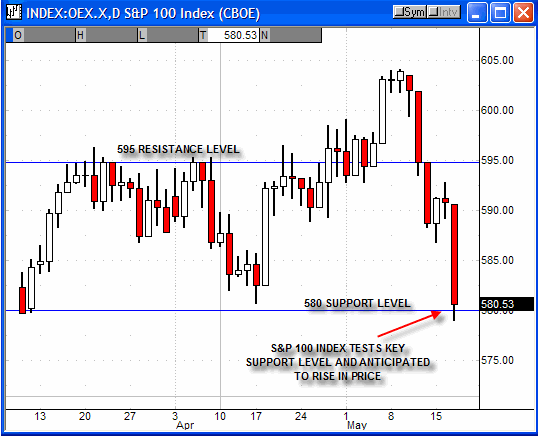This OEX chart shows you my buying zone
Charles Sachs has utilized S&P 100 for the past 14 years, both as a trader and an advisor. He uses 24 proprietary indicators in order to structure options strategies which can generate gains whether the market moves up, down or sideways.
As evidenced by the chart below, the S&P 100 index has been moving in a trading range for the past three months primarily between the 580 and 595 levels. The S&P 100 index has sold off sharply over the past week and closed at the 580 support level yesterday. Accordingly, we would expect the S&P 100 index to rise in price shortly and move back up towards the 595 resistance level. For a point of reference, the anticipated 15 point rise on the S&P 100 index would be the equivalent of about a 300 point rise on the Dow Jones Industrial index.

When financial markets are in a trading range, as outlined in the chart above, traders have the opportunity to formulate strategies using the time deprecation characteristics of options to give them a mathematical advantage to profit. Traders are recommended to use the extremes of the outlined trading range above to enter and exit their trades opportunistically. Using the aforementioned strategies, our recommendations have accrued over 139% in profits (excluding brokerage fees) since July 2004, without a single losing trade recommendation. We have achieved these results while financial markets have traded narrowly.
Bottom Line: In the short-term, traders can look to execute long (or call option) positions, or exit short positions, as the S&P 100 index is at the bottom of its recent trading range and should rise in price shortly. One other note: I will be giving an online options seminar today at 11 a.m. EST. to discuss more fully the proper approach for trading options. Sincerely, Charles Sachs Chief Options Strategist
